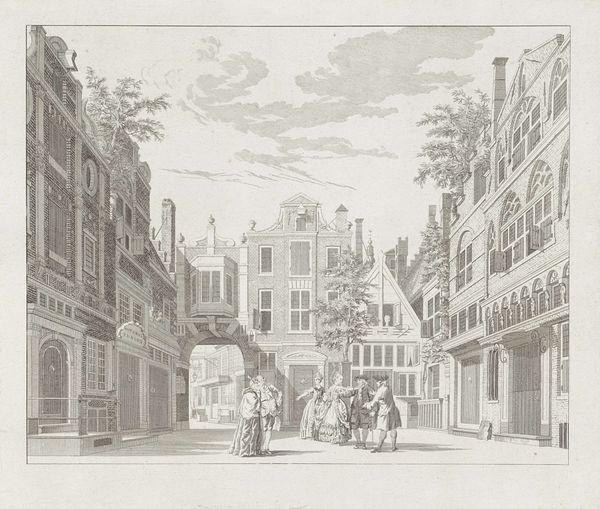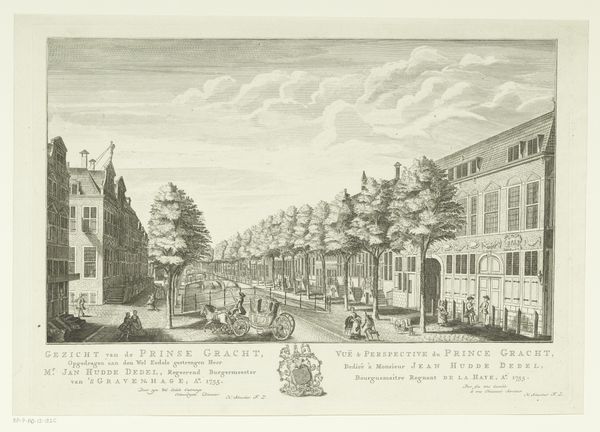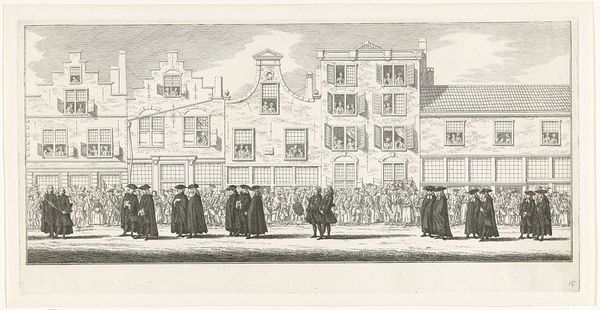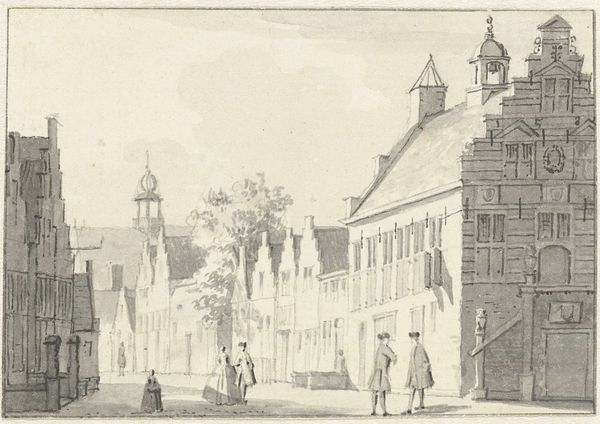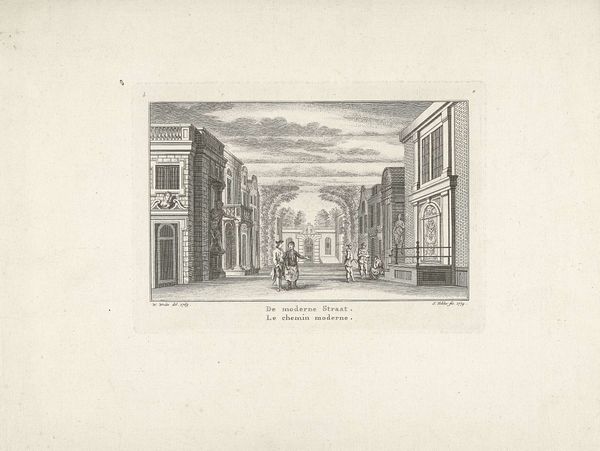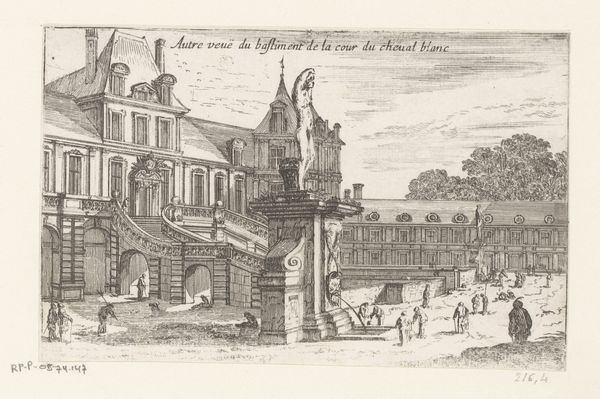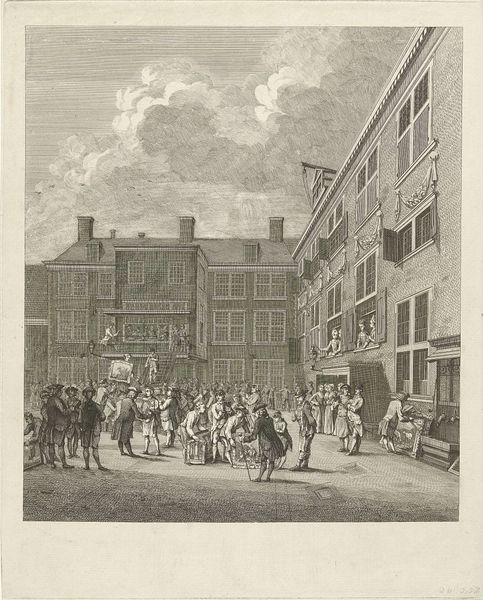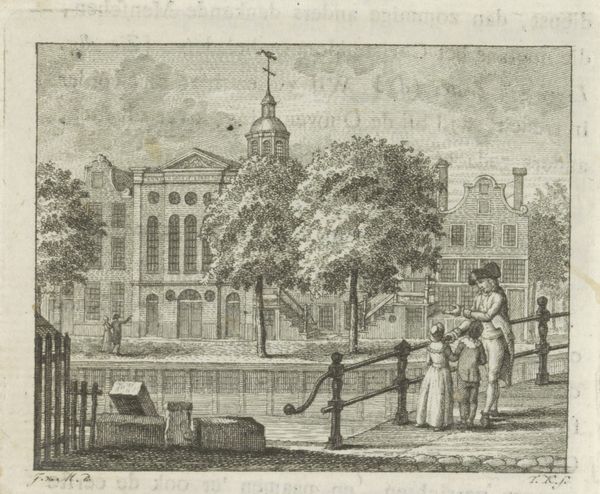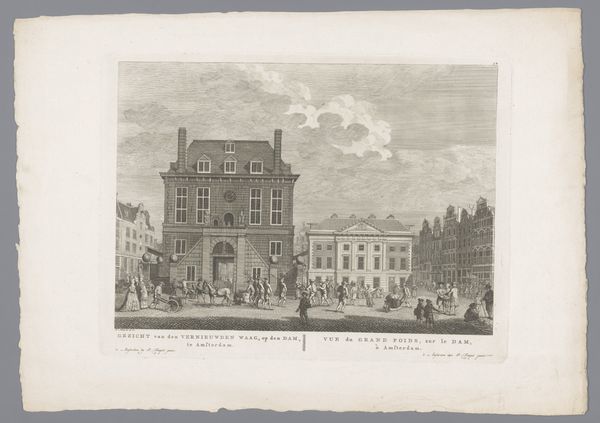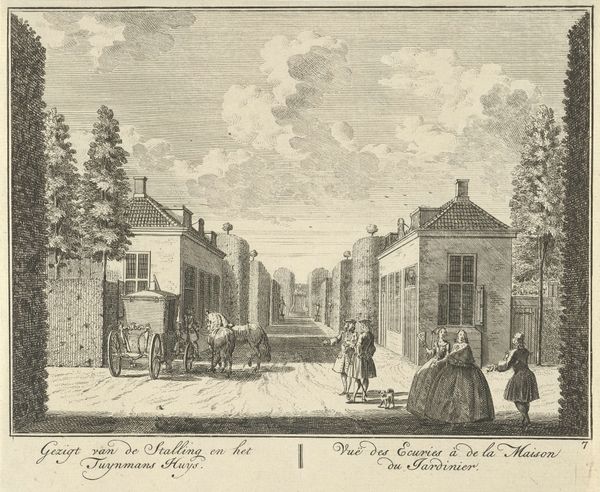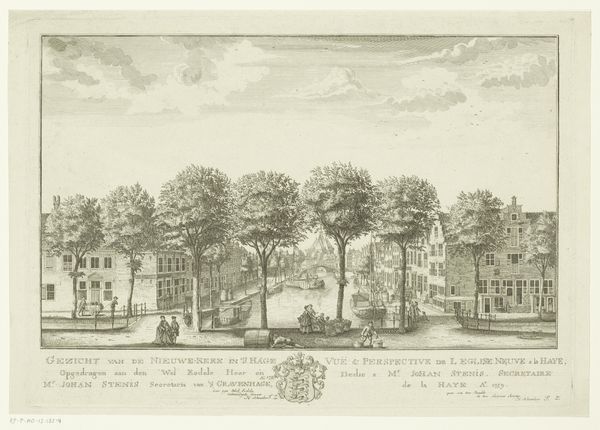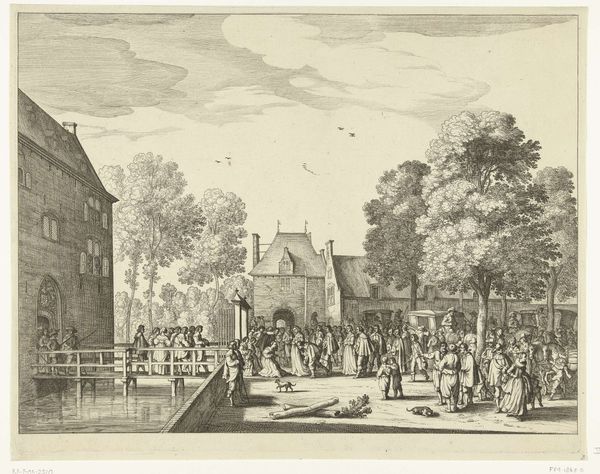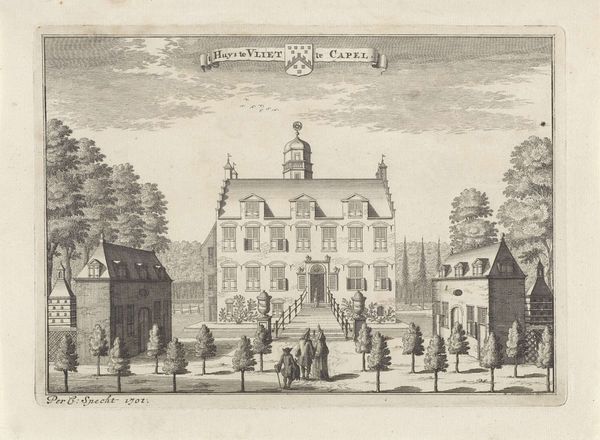
Dimensions: height 146 mm, width 271 mm
Copyright: Rijks Museum: Open Domain
Curator: Ah, I always find myself drawn to the particular mood of this engraving. "Toneeldecor: De Gemeene Buurt," or "Stage Design: The Common Neighborhood," made between 1760 and 1765 by Jan Punt. Editor: A theatrical backdrop indeed. It feels almost… expectant, doesn’t it? Like the players are just off stage. But tell me more about this Jan Punt; what was he about? Curator: Punt was very active in Amsterdam's theatrical scene. While he's celebrated as an engraver and designer, remember the vibrant backdrop this represents. Look at how the meticulously etched architecture frames the characters and lends authenticity to the stage. He wasn't just depicting a place, he was setting a scene for societal observation. Editor: Observation with a healthy dose of social commentary, I'd wager. The arrangement is striking. Note the stark lines of the buildings against the delicate rendering of the figures and the dramatic perspective which sucks you right into their communal moment. You have the women in the center gossiping. The loneliness of a single man, a solitary sentinel by the window. But there is no action on the stage; everybody is simply *waiting* and *watching*. Curator: Absolutely. Theatre during that period served as a mirror to society. Playwrights aimed to instruct and provoke thought. As a stage designer, Punt would ensure these messages came across loud and clear through setting and backdrop alone, especially with his attention to local detail to evoke that common, universal element. Editor: The architecture dominates, really highlighting the constrained roles individuals played, walled in physically and socially. Is it Baroque influence we see here, or is Punt just constrained? Curator: Good eye! The Baroque elements are evident in the ornamentation and elaborate detailing but tempered with a distinctly Dutch realism and civic pride. These brick buildings, the shutters and dormers, are as much the stars as any actor. Consider the intended effect of the design and how it functions within a theatrical ecosystem: is this street lively or is the world somber? What story might this urban setting seek to impart upon the beholder? Editor: To answer your thought, and with great delight—I still can’t shake the expectant stillness. Like any moment, drama, tragedy, comedy could flood this empty Dutch street anytime. Punt isn't just depicting a backdrop but perhaps an invitation, to think and feel about life. Curator: Beautifully put. An open invitation is truly what the world of art strives to offer. Thank you for your insight.
Comments
No comments
Be the first to comment and join the conversation on the ultimate creative platform.
